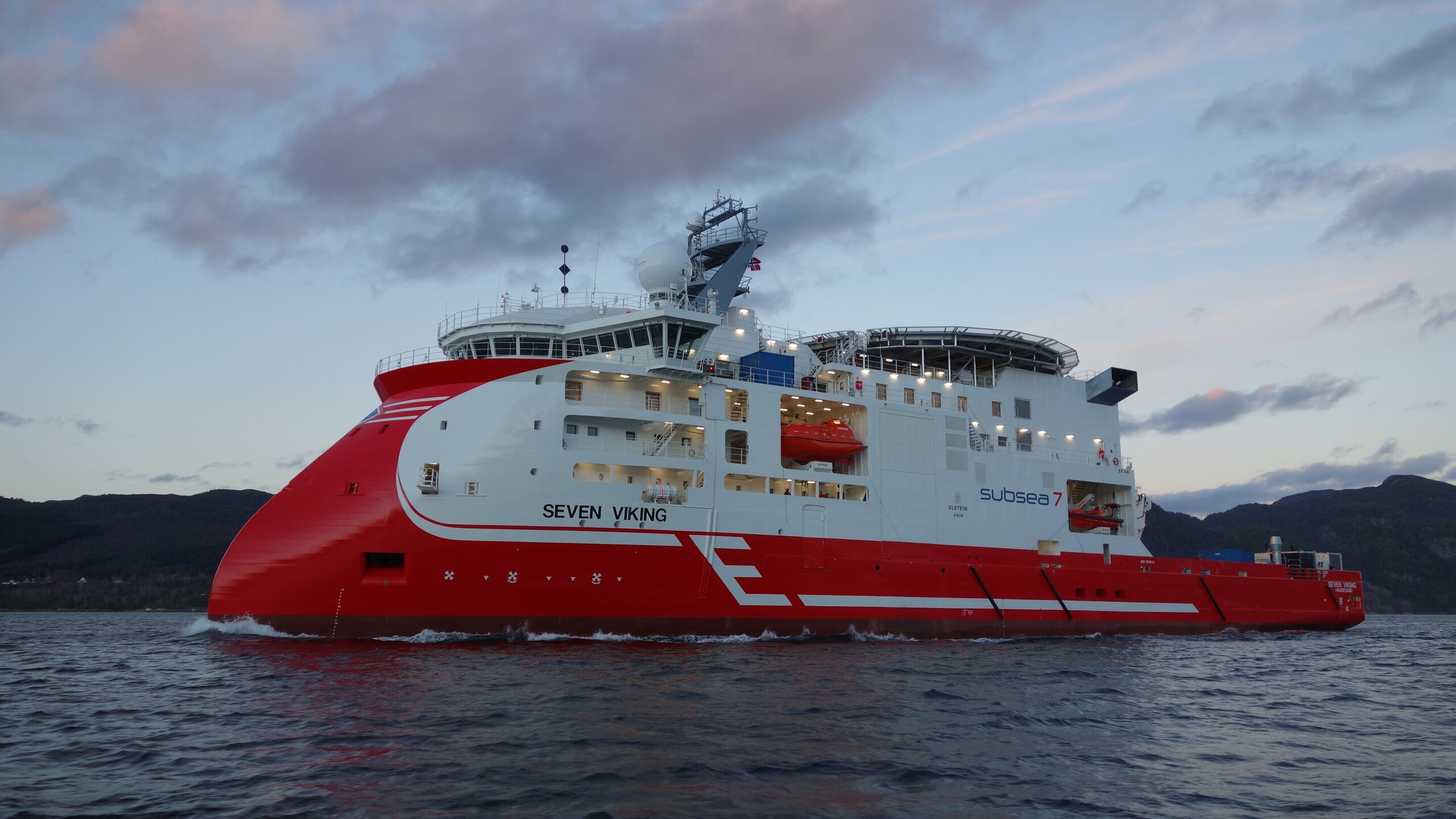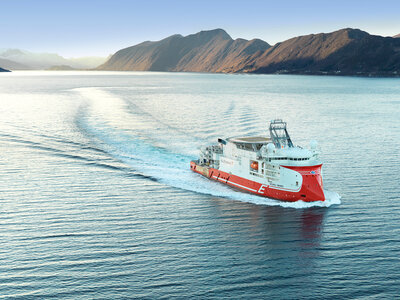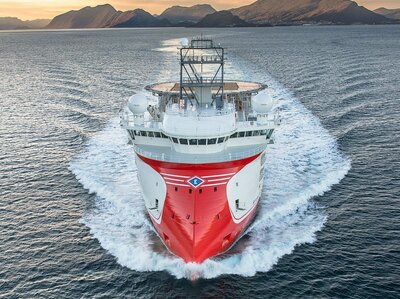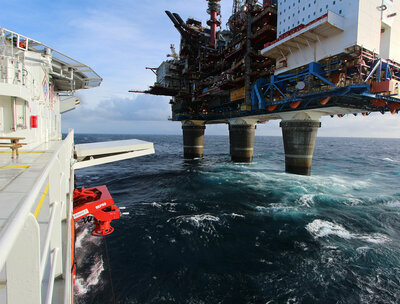
Seven Viking
The vessel is designed to meet the high demands of IMR, survey, and light construction in some of the harshest environments. The versatility of the vessel allows for RFO operations, scale treatment and light diving support services. Equipment and skidding system are integrated in a large hangar area.
Primary Specifications
Additional Data
Ship history
After delivery in 2013, the vessel started operations in the North Sea on a five-year contract for Statoil (now: Equinor). Planned tasks included inspection, maintenance and repair of subsea oil installations, alongside scale treatment and RFO operations.
The vessel's X-BOW® design reduces motion in transit and increases stability in the potential five-metre swells that can characterise the North Sea. Despite this stability, which is usually associated with size, the SX148 design is crafted to be compact in stature. This nimbleness, enhanced by a top speed of 17 knots, allows the 'Seven Viking' to manoeuvre easily in confined spaces, accessing difficult-to-reach areas.
Although restricted in size, the vessel is not limited in its capacity to carry a litany of essential subsea tools and personnel, thanks to a configuration whereby hull space is maximised and equipment is integrated within the large hangar area.
Milestones
2014-15: Rebuilt by Ulstein Verft. Designers from Ulstein joined the vessel on a week-long field trip; read their story here.
2016: Involved in the Aasta Hansteen development: The Aasta Hansteen gas field is 300 km west of Bodø, Norway, and the water depth is 1,300 m, making this the deepest gas field on the Norwegian continental shelf. The combination of deep water and harsh weather conditions results in demanding wave and current conditions. All vessels involved must have been optimally prepared before arriving on site. Seven Viking undertook the tie-in and commissioning activities of the flowline system.
In 2018, after five years of work, Seven Viking was converted into battery hybrid propulsion. Westcon delivered the battery pack, and several service personnel from Ulstein were on board to adjust the switchboards and make changes to the power management and the automation system, ULSTEIN IAS.
2018, May: Subsea 7 announced a five-year IMR (Inspection, Maintenance, Repair) contract for Equinor on the Norwegian Continental Shelf, with options for extensions. The contract involved providing a life-of-field support vessel with work-class and observation-class ROVS and a module handling support system to perform standard inspections, light construction and scale squeeze operations, module handling, and Christmas tree installation. Offshore activities were to begin in January 2019.
2022, January: The vessel returned to Ulstein Verft for her 10-year survey.
2025, April: Subsea7 extended a contract for the Seven Viking, declaring a remaining option for 2026, and adding 2027 as a firm year, and an option for 2028.













